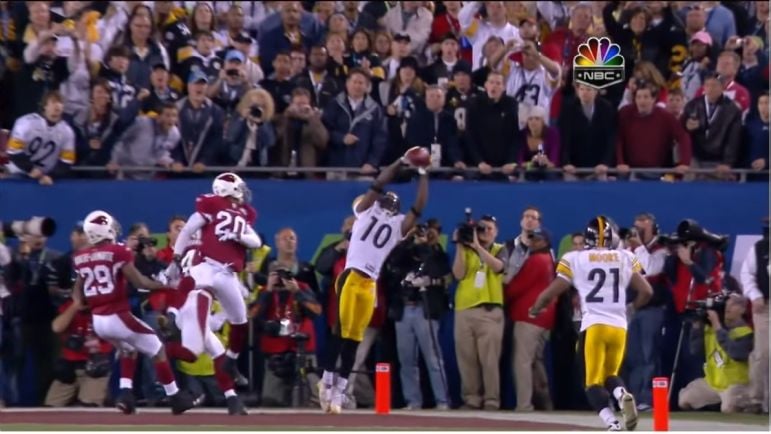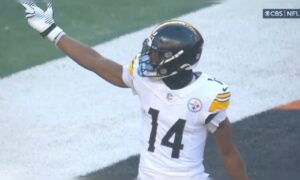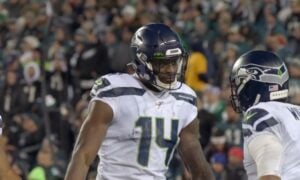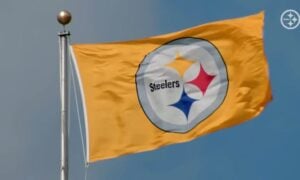Super Bowl XLIII is one of the greatest of all time in part due to how many iconic plays happened. LB James Harrison’s 100-yard pick-six and Santonio Holmes’s game-winning touchdown toe tap are plays that will forever be burned in the memories of football fans.
Holmes’ toe tap is one of the greatest catches in Super Bowl history due to the impact (it won the game) and difficulty. It was a play that was practiced for weeks ahead of time, but according to Holmes, then-wide receivers coach Randy Fichtner told him intentionally not the catch the ball in practice leading up to the Super Bowl.
“Coach said we first gonna line up in the end zone and we gonna work the play,” said Holmes on The BTM Podcast. “First play Ben threw to me, I dropped it. Coach said, it’s cool. Don’t catch it no more. Coach Randy Fichtner came up to me, we had ran the play three times in practice that day and I dropped every one. He said, “We gonna keep throwing this play, but if it comes down to it, don’t catch it.’ So you know what, throughout the rest of the postseason in the playoffs, every time we threw that play in practice, I never caught it. The DB intercepted it. I dropped it on purpose. I let it go through my hands. I did exactly what coach told me. He said, ‘Don’t catch it.’ Two weeks of training before the Super Bowl, we ran this play every practice to end every practice. The last play we ran at Super Bowl practice was the same play that they threw in the corner of the end zone.”
The strategy employed by Holmes and the Steelers is admittedly a bizarre one. Having Holmes intentionally drop a pass does not make any sense, but it worked as the repetition helped QB Ben Roethlisberger put a ball right on the money to Holmes who when asked to catch it made sure to secure in softly in his outstretched hands.
On this day in 2009, Santonio Holmes made an all-time catch to win Super Bowl XLIII. (via @NFLThrowback)@ToneTime10 | @steelers pic.twitter.com/uP86Qbrt7M
— NFL (@NFL) February 1, 2022
What does make it ironic though is that a very similar play was ran the play before the touchdown with Holmes actually dropping a much easier catch. Maybe it was the constant repetition of dropping the pass that led to that first drop, but it certainly led to a tense moment in the huddle leading up to the winning play.
Holmes’ catch capped off a performance well deserving of Super Bowl MVP. He finished the night with nine catches for 131 yards and the aforementioned game winning touchdown. Holmes was spectacular in particular on the game-winning drive as Roethlisberger continuously looked his way and Holmes kept on delivering. On that drive, Holmes caught four passes for 73 yards.
Was asking Holmes to drop the ball in practice a good strategy? Well, he did drop the first ball thrown to him in the end zone but caught the second so you can definitely make an argument either way. But it worked out so in the grand scheme of things it doesn’t matter. You could argue too that it helped Roethlisberger learn how to throw the best pass possible.
Looking back on Super Bowl XLIII this just adds to the lore of it. The Super Bowl already has iconic plays and a bunch of iconic players, but now there is some backstory to how one of the greatest plays in Super Bowl history came about. In my eyes, this just makes the play even better. The Steelers knew they were going to use it given they practiced it throughout the playoffs, but the idea to make sure the only time it worked is when it mattered is just so cool. It may be a poor strategy, but it worked and now the world knows a really cool story of how the Steelers won their sixth Lombardi Trophy.








